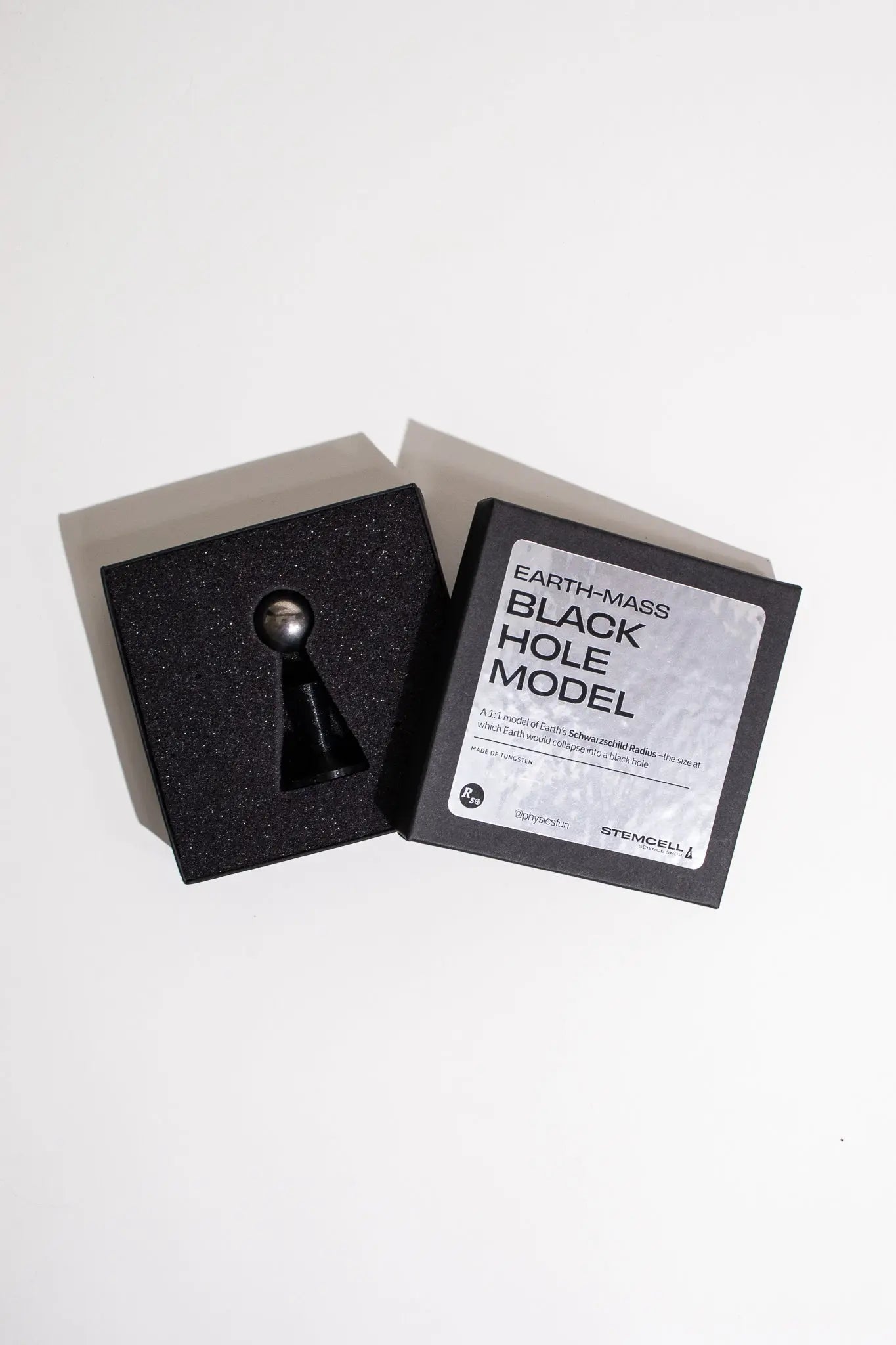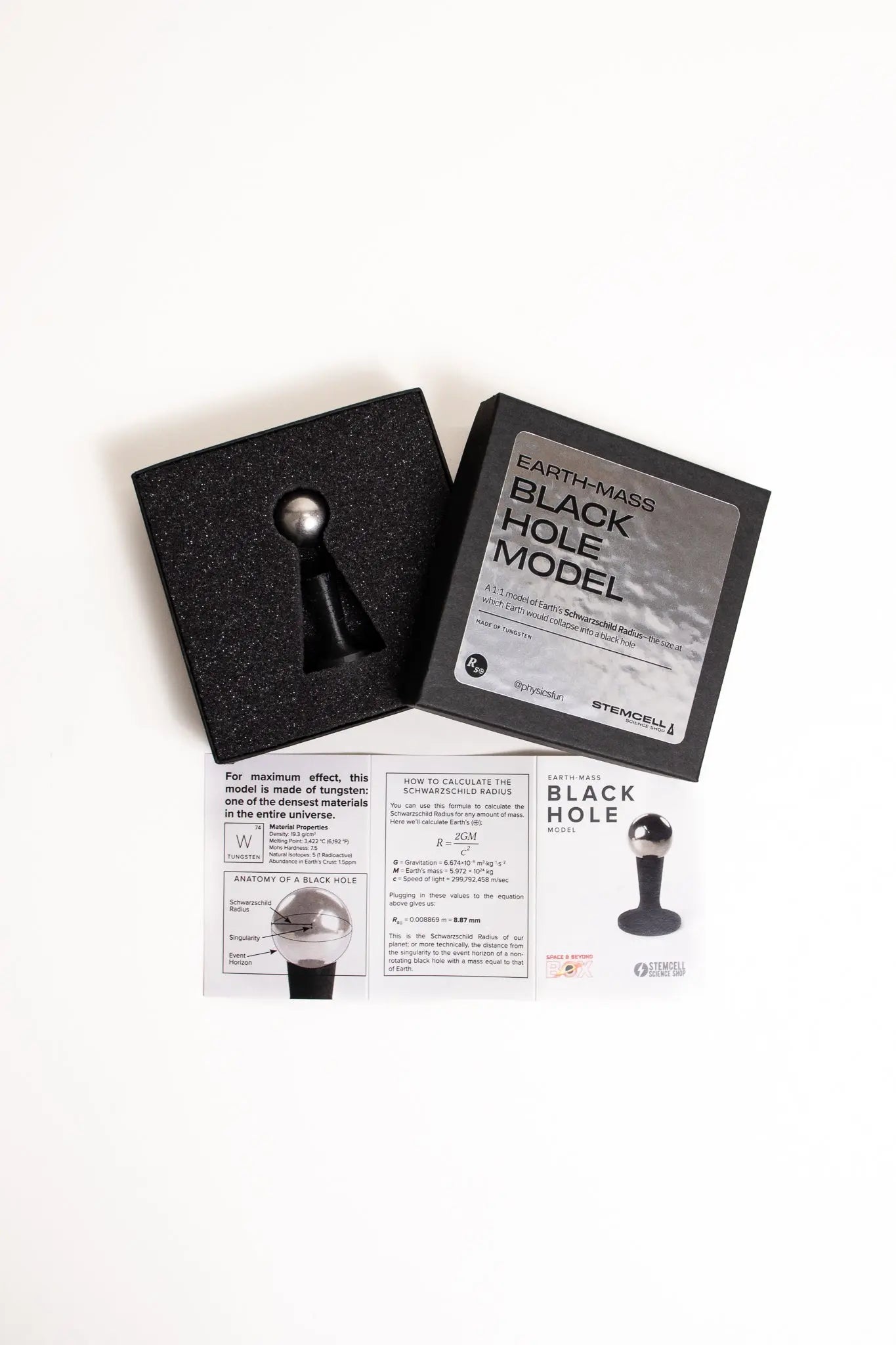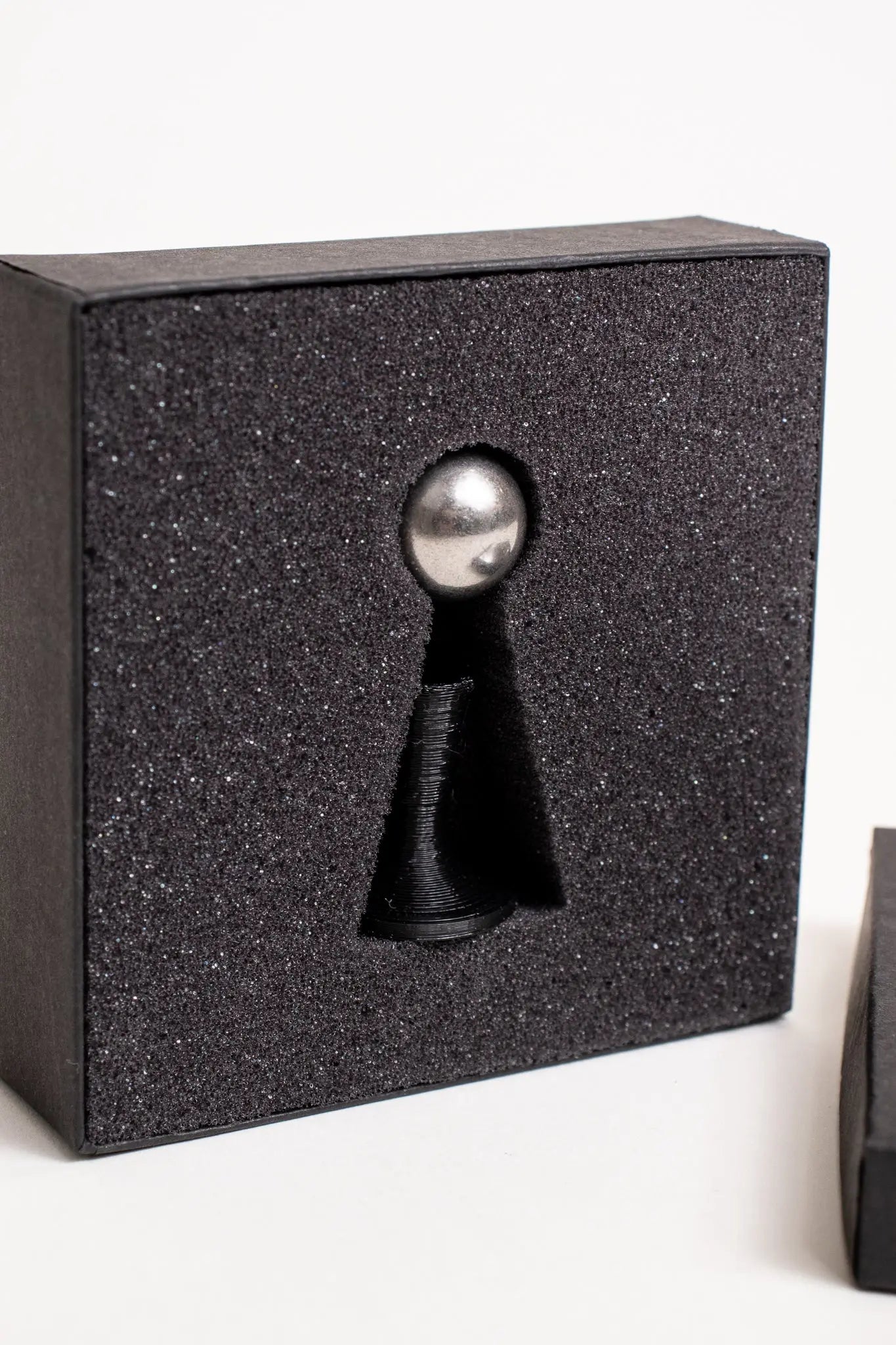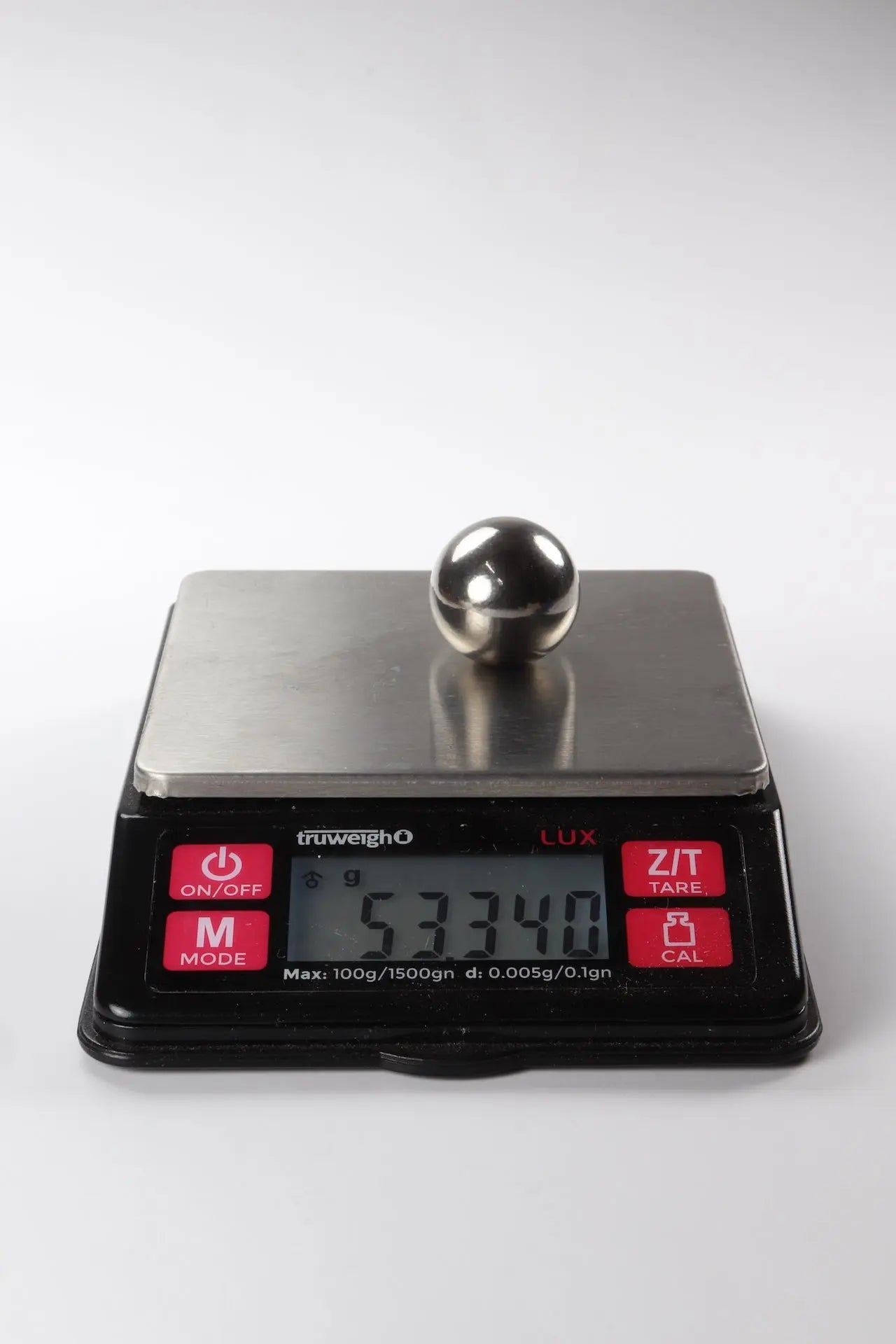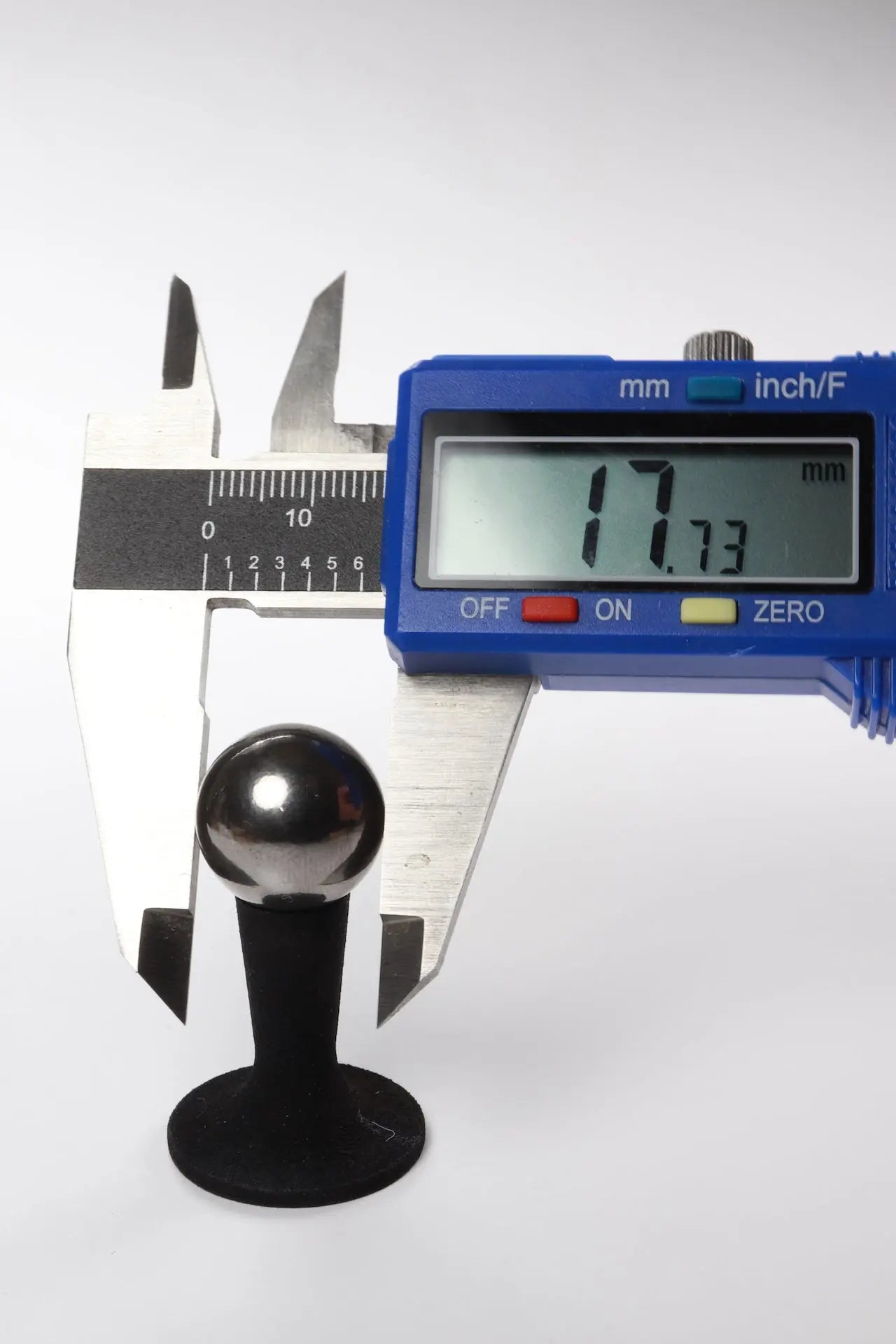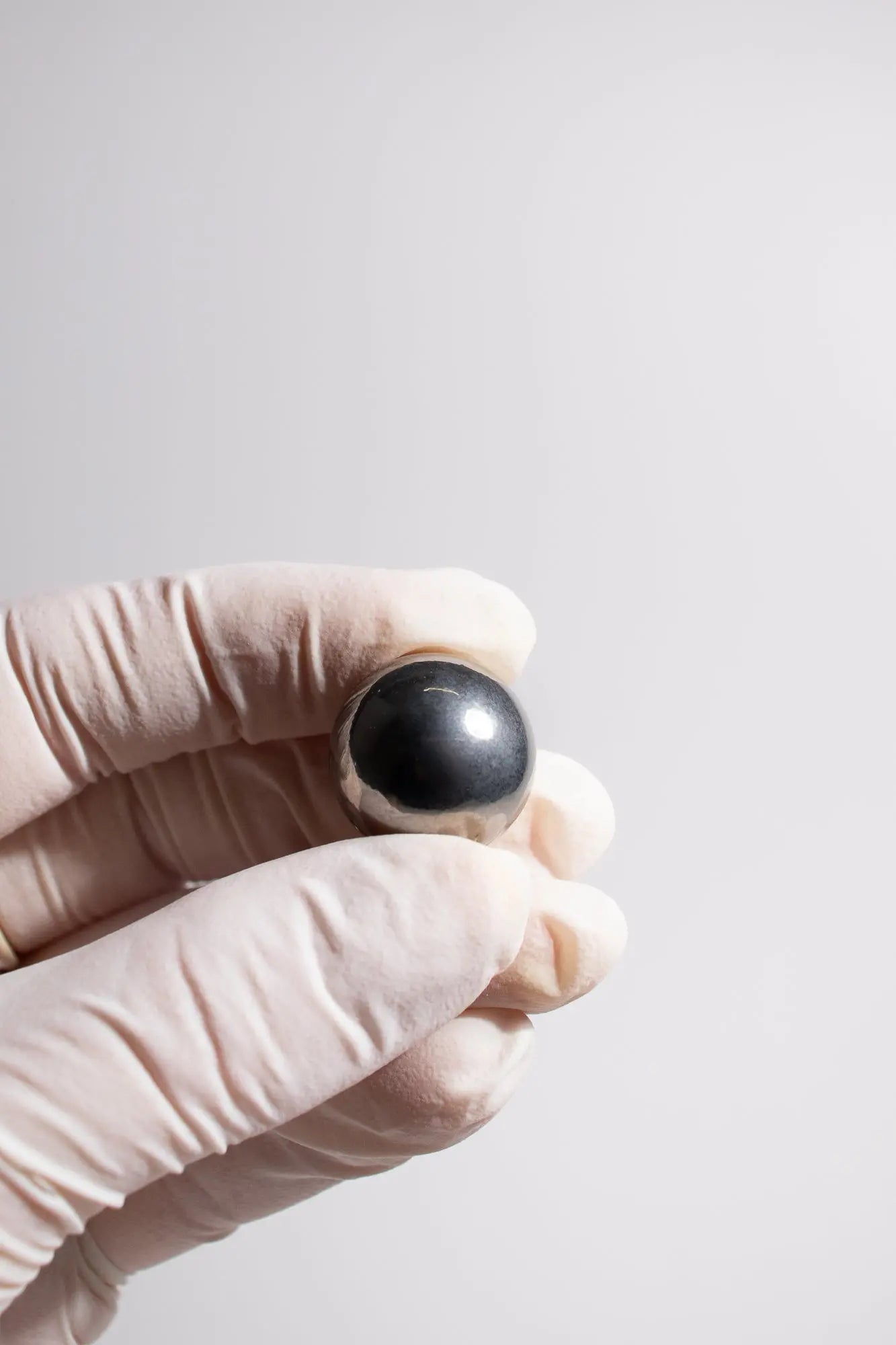Tungsten Black Hole Model
Tungsten Black Hole Model
4.88 / 5.0
(51) 51 total reviews
New Packaging
 Item #089
Item #089
If you compress any amount of mass, it becomes denser. If you compress it enough, it will become so dense that light can no longer escape it—this size is the object’s Schwarzschild radius. An object that is compressed smaller than this radius is a black hole.
This tungsten sphere has been engineered to have exactly the same radius as the Schwarzschild radius of Earth. If you compressed all of the mass of Earth into the volume of this tiny sphere, it would be so incredibly dense that you would not even be able to see it.
This sphere is a great aid for comprehending the scale of black holes and their extreme density. Made of tungsten, one of the densest elements in the universe, to help illustrate the high density of such an object. Also makes a great tungsten sample (W, 74) for element collectors.
Every object has a Schwarzschild radius proportional to its density: the Sun's is 3km, Jupiter’s is 2.62m, and a hamburger’s is smaller than a single atom. Karl Schwarzschild derived this property in 1915 using Einstein’s recent field equations.
Derivation (pdf)
Radius: 8.87 mm
Weight: 53.34 g
Density: 18.5 g/cc
Our model was recently used as a visual aid in a lecture on black holes by renowned astrophysicist Brian Greene! (Featured around 22:54, but we recommend the whole lecture!)
- Detailed Info Included
- Display Stand
- Protective Storage Box
Matter Subscriber Price:
Couldn't load pickup availability


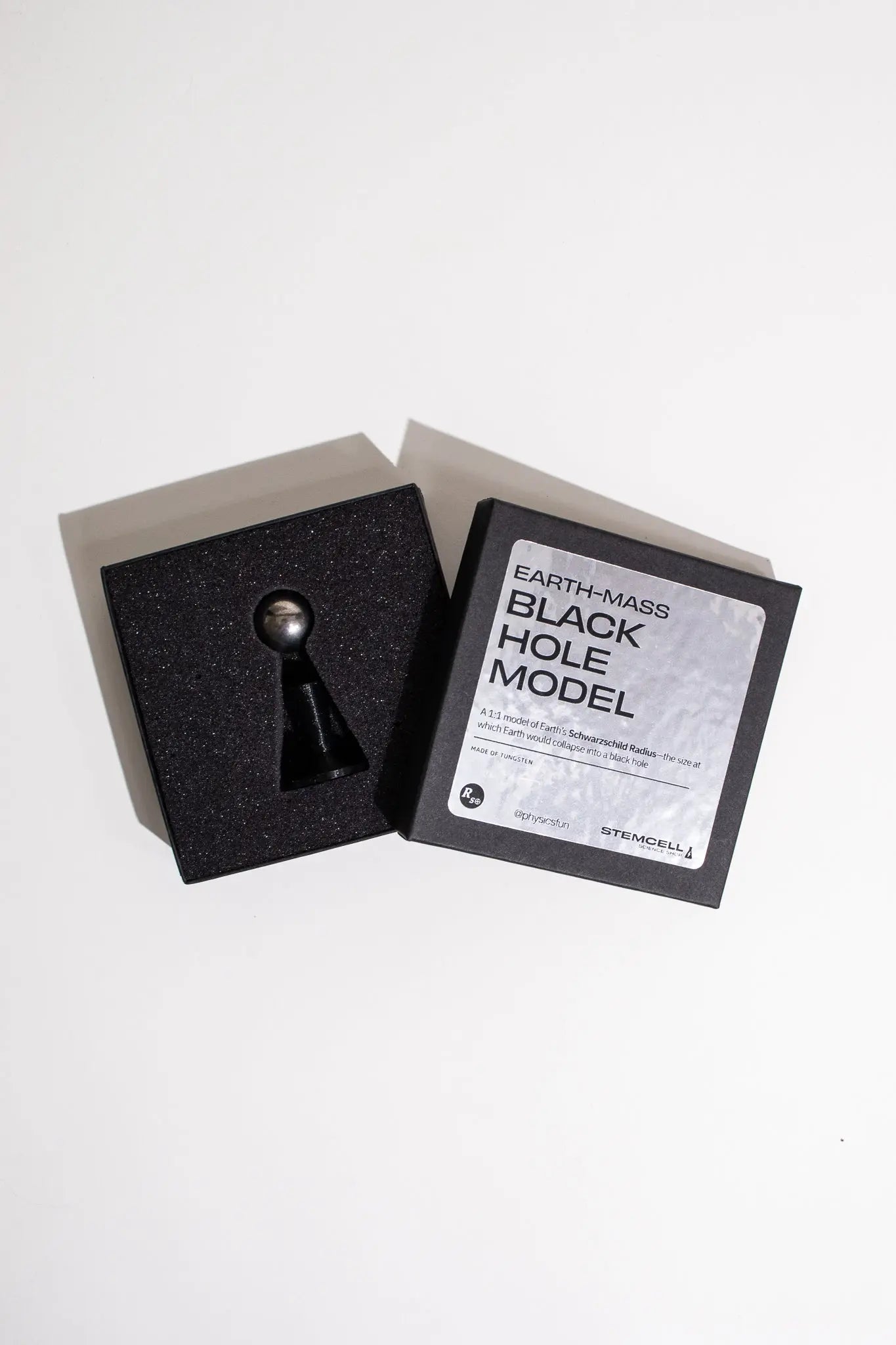
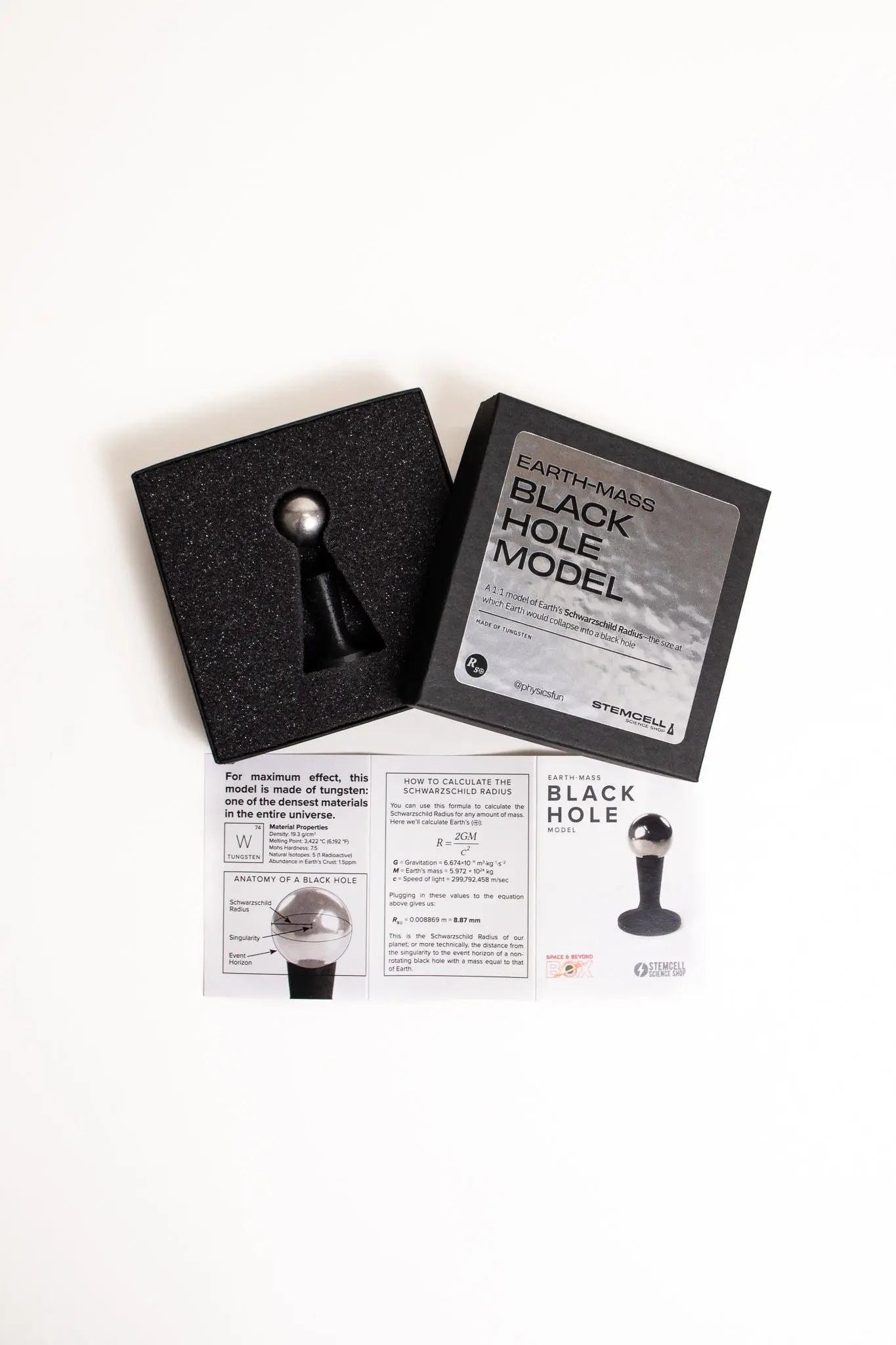
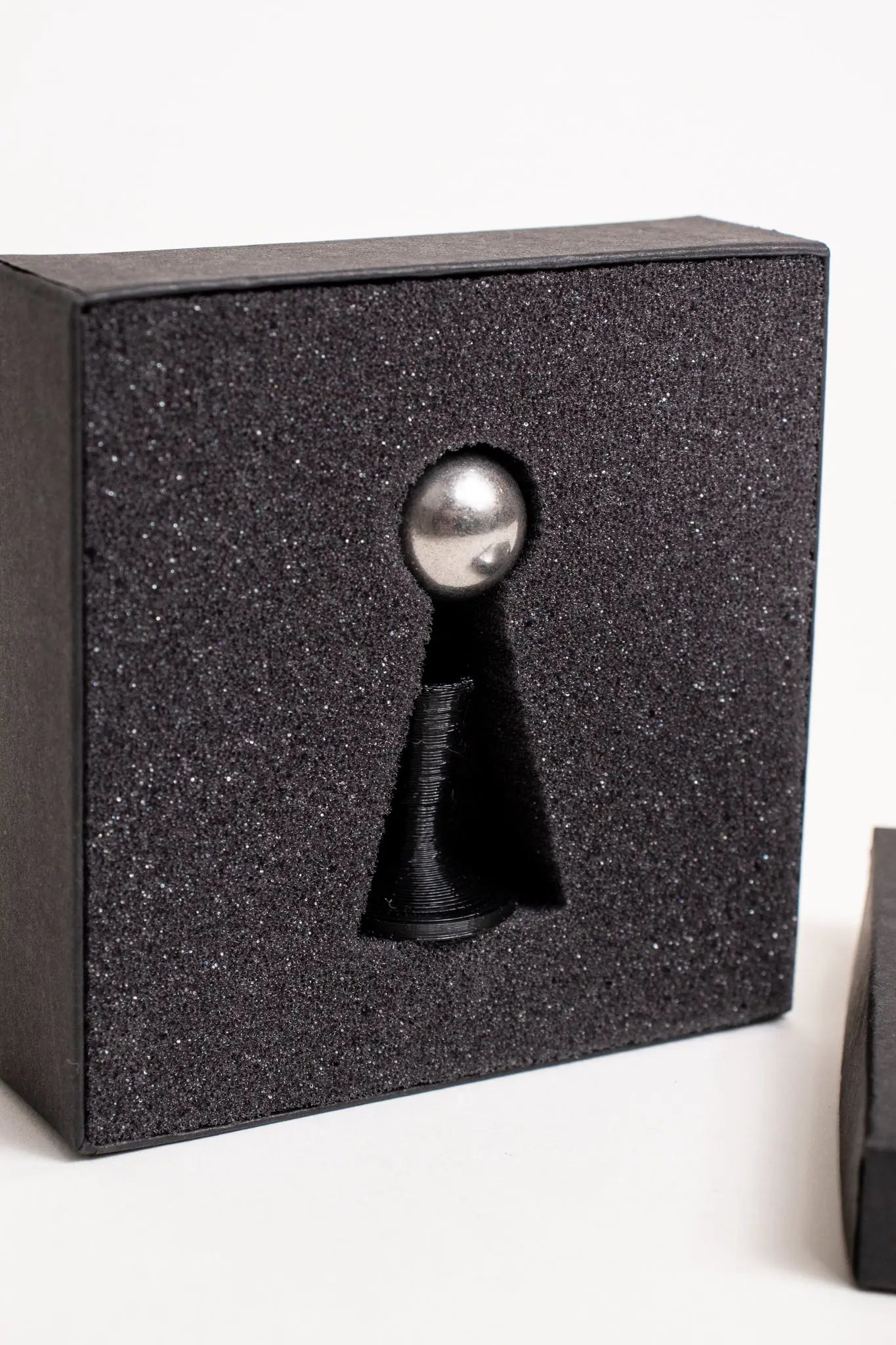
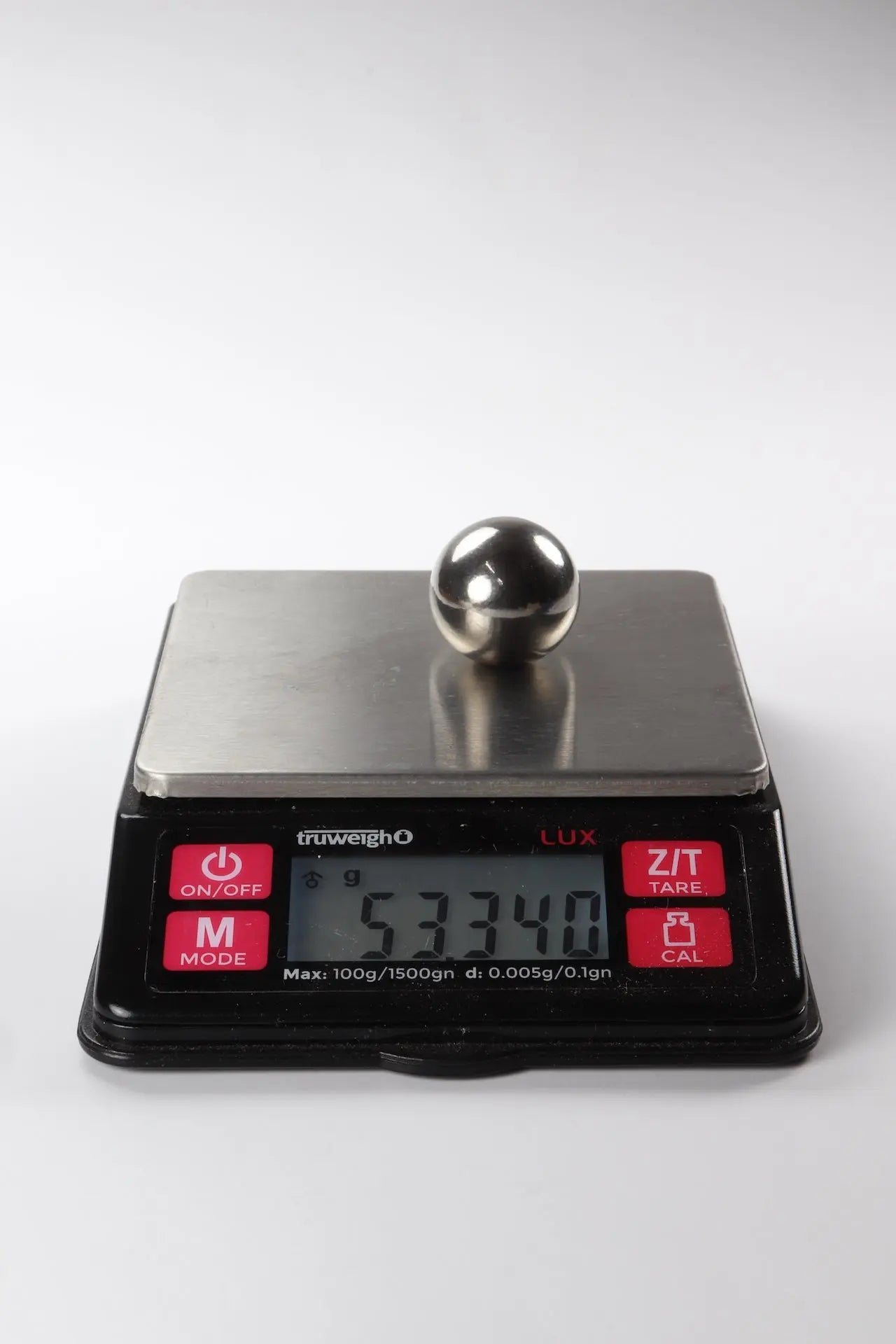
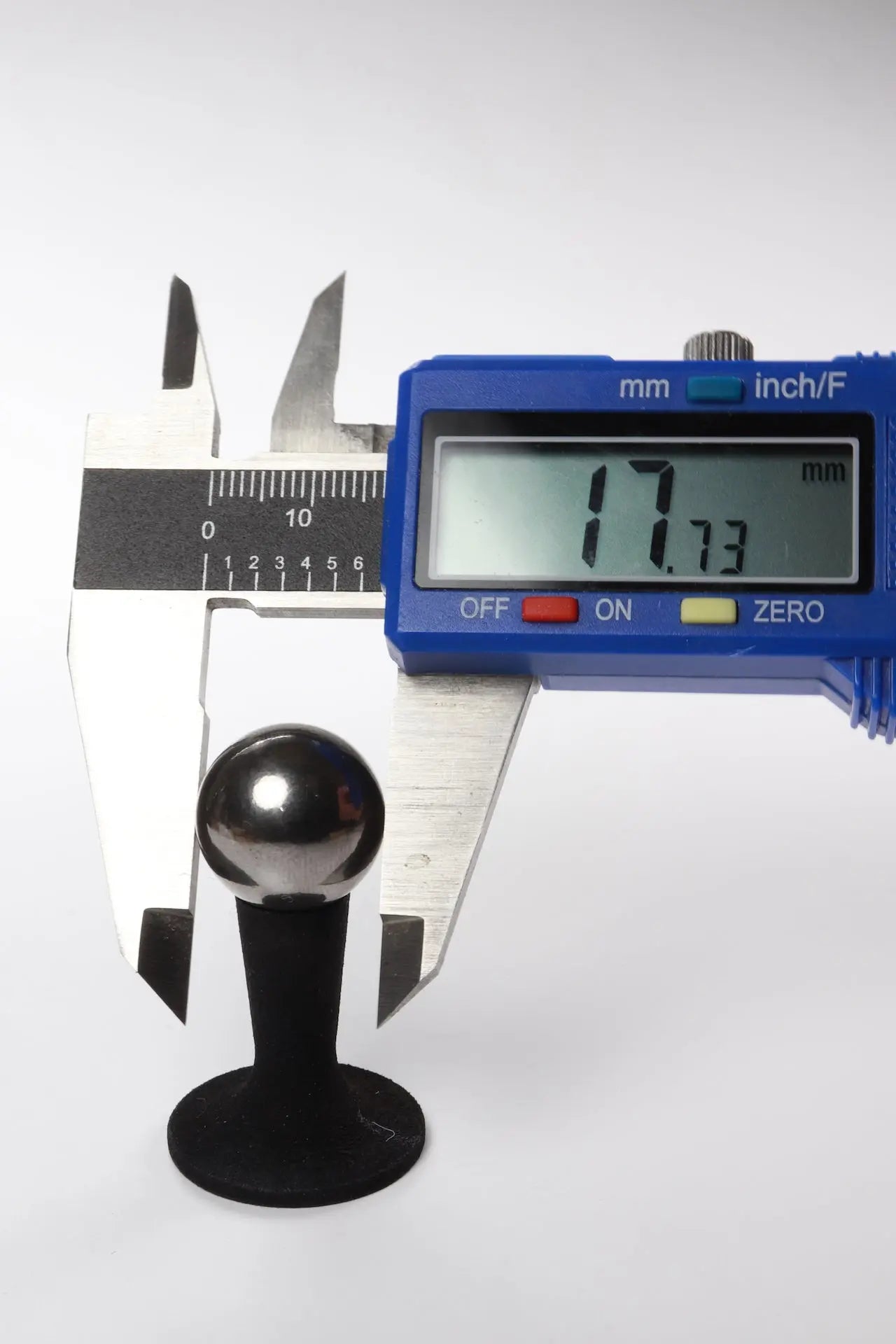
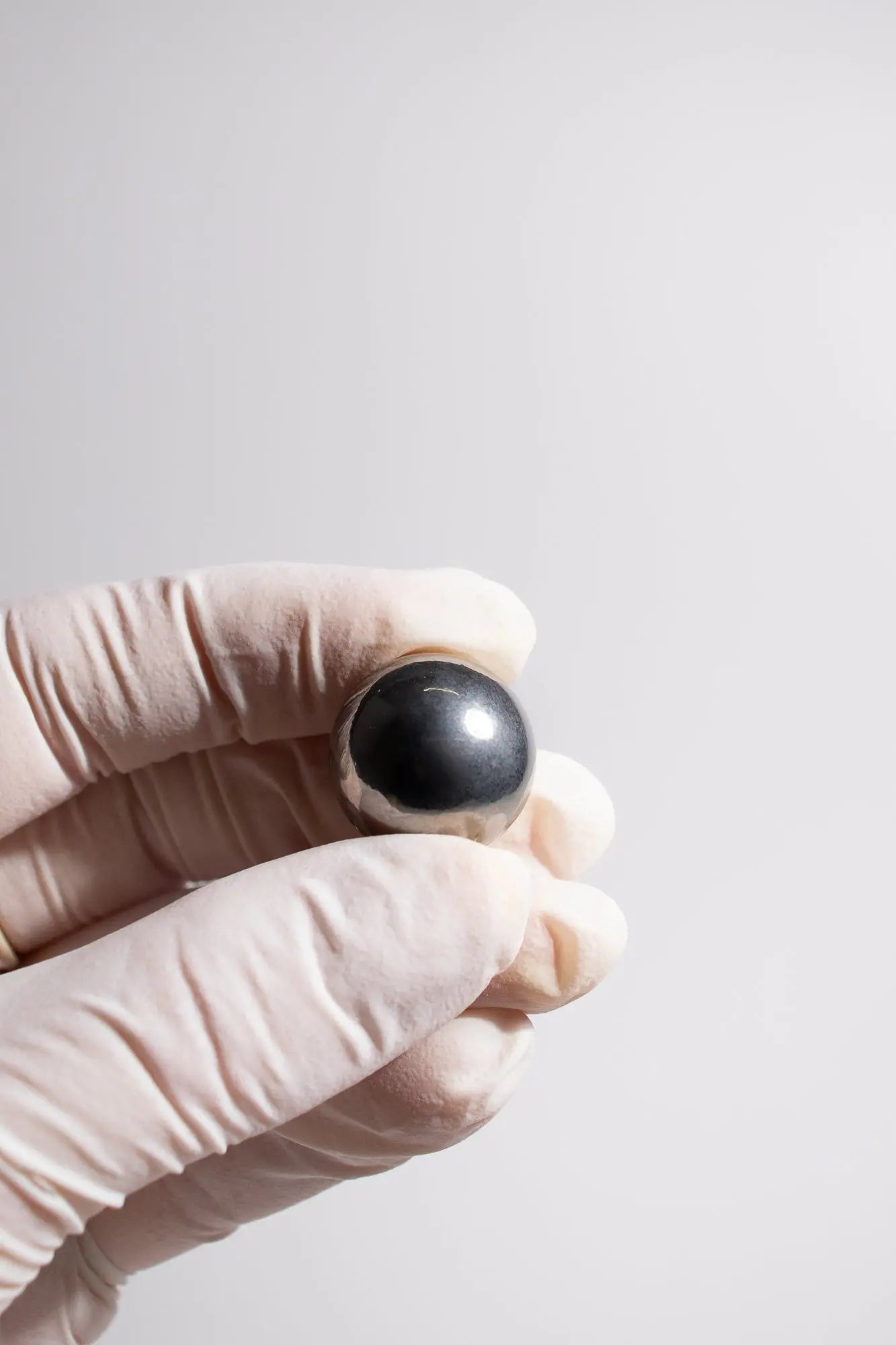
Collections containing this item:
Bestsellers
|
Element Samples
|
Matter Items
|
Newest Listings
|
Outer Space
|
Physics
|
Physicsfun
|
Stemcell Catalog
|
Wholesale Products
|
AUTHENTICITY GUARANTEED
We only list 100% verified authentic items. We work with reputable collectors, and regularly consult with our network of scientists and experts.
-
Free Shipping
Orders ≥$50 qualify for free US shipping
Orders ≥$100 qualify for free global shipping -
Secure Payments
Pay how you like: credit card, PayPal, After Pay, Shop Pay, Venmo, Apple/Google/Meta Pay & crypto
-
Simple Returns
Change your mind? No problem. Enjoy easy returns within 30 days.
This makes a awesome birthday present!!
The black hole model was of great quality. It was a wonderful gift for our son who loves Science. A fabulous conversation starter while being displayed on his desk. The Science lover will enjoy this one.
Great gift for our son who is very interested in Science.
Really cool little thing to have in my science classroom. My students thought it was really cool once I explained what it was
Cool little science gift. My year 11s liked it a lot
This was a bday gift for my bf who loves physics. He can't stop playing with it
similar items_
WE TAKE SCIENCE SERIOUSLY
You deserve better than craft store science products. And we think learning is more impactful when you're holding a tangible piece of what you're learning about. That's why Stemcell exists.
We're dedicated to providing the best scientific products available—whether they're fragments of scientific importance, experimental activities, or just interesting things that scratch your curiosity itch.
With every new product launch, our list of new ideas gets longer rather than shorter. So check in often for our latest projects, and thanks for being a part of our endeavor to make the world a smarter place to live.
Believe in yourself; for everything else, there's science.
— TERRY MUDGE, FOUNDER & SCIENTIFIC DIRECTOR


